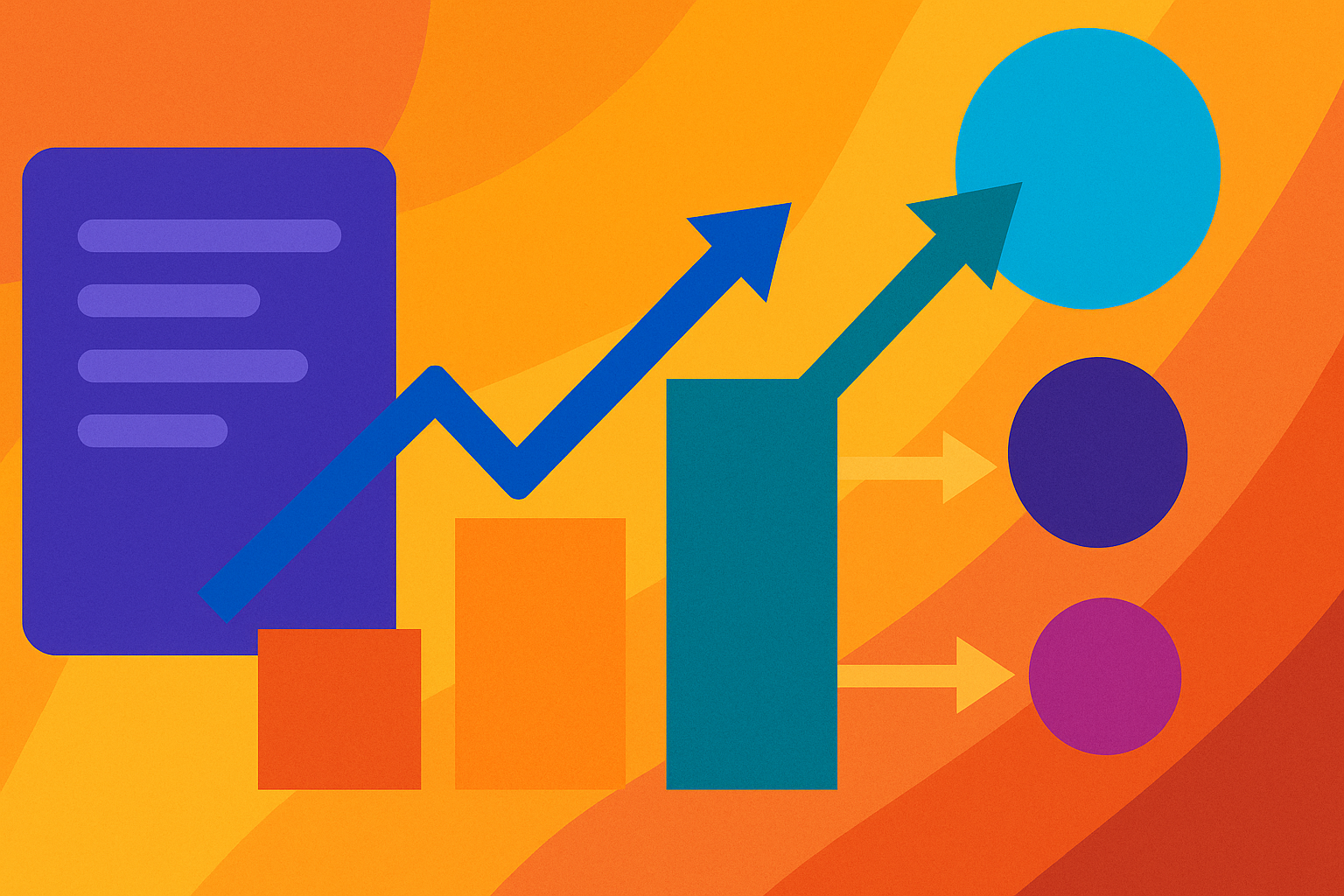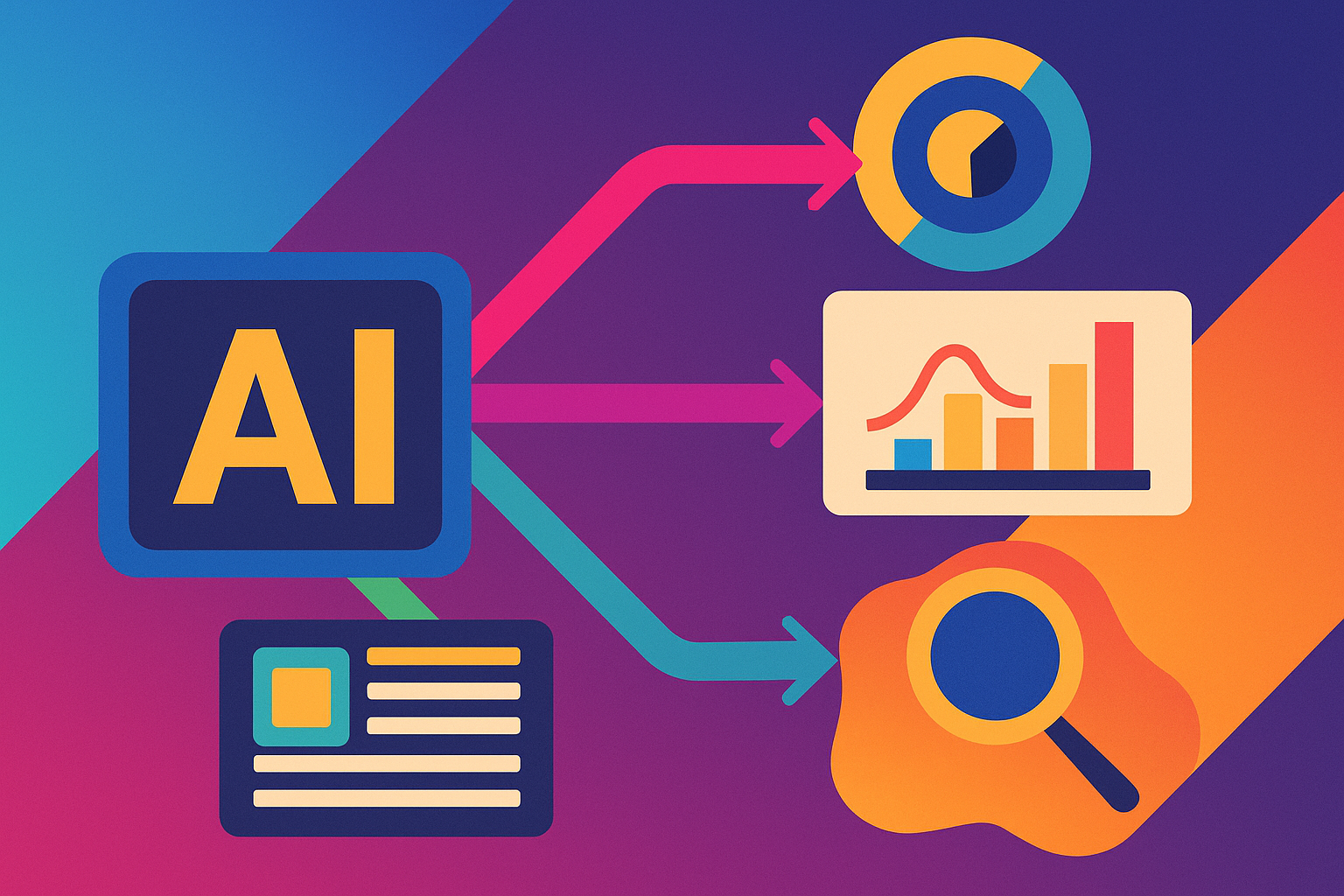As AI tools like ChatGPT, Perplexity, and Gemini become mainstream for discovery and decision-making, a new type of website visitor is emerging—one that behaves very differently from your typical Google search user. These AI search visitors tend to bounce faster, visit fewer pages, and spend more focused time on-site. But before sounding the alarm on low engagement, there’s a twist: they may actually convert better.
At Theia Media, we’ve analyzed the shift closely to help businesses understand what’s really happening when traffic starts coming from AI platforms instead of traditional search engines. Here’s what we’ve found - and what it means for your website strategy.
Understanding AI Traffic Behavior
To compare traditional search visitors with AI-driven traffic, we need to look at four key metrics:
- Pages per visit
- Time on site
- Session depth
- Bounce rate
Let’s break each of these down through observed behavior patterns across thousands of sites.
1. AI Visitors Explore Less, But Focus More
Users coming from AI platforms typically visit fewer pages - about one less per session than those arriving from traditional search engines. For example, while a search engine user might browse five or six pages across a blog, services, and contact section, an AI visitor often lands on one specific resource and exits shortly after.
That may sound like a bad thing - but in many cases, it’s not.
Why?
AI visitors often arrive with specific context. They’ve already asked a conversational tool something detailed like “What’s the best accounting software for a small business in Florida?” If your website was cited in the AI-generated answer, the user lands with a clear expectation and question. They aren’t exploring - they’re validating.
2. More Time on a Single Page
Interestingly, despite visiting fewer pages, AI visitors tend to spend more time on the content they do engage with. This is a sign of intent. Rather than bouncing between pages to piece together an answer, AI visitors stay longer on a single page - absorbing, evaluating, and often deciding.
Let’s say someone lands on your pricing page after being recommended by an AI tool. Instead of clicking around, they may spend two minutes reading that page carefully before deciding to contact you or leave. This kind of attention is rare in the traditional search journey.
3. Higher Bounce Rates - But With a Catch
Bounce rate often gets a bad reputation. In general analytics, a high bounce rate can indicate poor content or user experience. But with AI search visitors, the story shifts.
Imagine a user who asked Perplexity for the best outdoor security camera, and your site was cited in the result. They click through, read the recommendation, confirm the specs match their need, and then return to Perplexity to compare another option.
That’s a bounce, technically - but it fulfilled the user’s need. They didn’t need to browse. They got what they came for.
It’s time we stop treating bounces as universal red flags and start recognizing context.
4. AI Traffic May Convert Better
Although AI visitors don’t stick around long or visit multiple pages, many businesses - including ours—have reported higher conversion rates from these users. Why?
Because they’re not in the awareness stage - they’re much closer to a decision.
A user who lands on your product page after an AI recommendation is already pre-qualified. They’ve been “warmed up” by the AI’s explanation, and your site simply serves as the final step for confirmation or purchase.
We’ve seen examples of clients getting better ROI from AI traffic despite having lower average session durations and higher bounce rates. It’s not uncommon for conversions from AI platforms to be two to three times more efficient than traditional SEO leads.
What This Means for Your Website Strategy
Instead of optimizing only for page depth or low bounce rates, businesses need to shift toward optimizing for clarity, relevance, and trust. When AI sends a user your way, you have one shot to deliver a high-quality answer that matches their intent.
Here’s how to prepare:
Optimize Key Landing Pages for “One-and-Done” Visits
Make sure your product pages, FAQs, and service pages are comprehensive, fast-loading, and easy to skim. AI traffic may never see your homepage - so each landing page must stand on its own.
Use Clear Headings and Answer-Driven Content
AI search visitors want confirmation. Use direct headings, bulleted features (on your site - not in captions), and short paragraphs that answer their query without requiring exploration.
Track AI Referrals Separately
Use UTMs or AI-specific analytics tools to measure how users from ChatGPT, Perplexity, or Gemini behave. Segmenting this traffic helps you understand their patterns and conversion paths separately from traditional visitors.
Rethink Bounce Rate as a Signal
Not every bounce is bad. Combine bounce rate with time-on-page and scroll depth to get a fuller picture. A user who stays two minutes and bounces might still convert later.
Don’t Panic - Adapt
AI traffic is reshaping how users engage with websites. They’re browsing less, but arriving more prepared. While this might deflate some of your traditional engagement metrics, it also opens the door to higher-intent conversions.
If your content is helpful, skimmable, and well-aligned with the query that led to your site, AI visitors can be a powerful - and profitable - audience.
At Theia Media, we help businesses navigate this shift by combining classic SEO fundamentals with strategies designed for AI search behaviors. Because the future of traffic isn’t just about who finds you - it’s about who’s ready to act.









